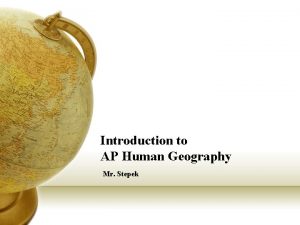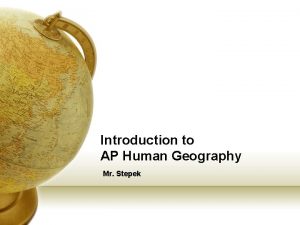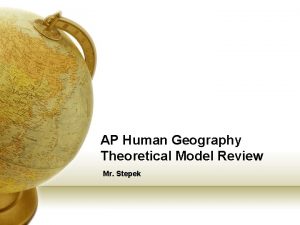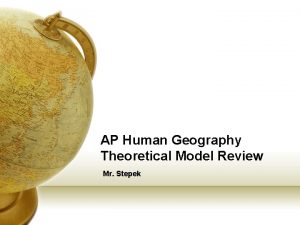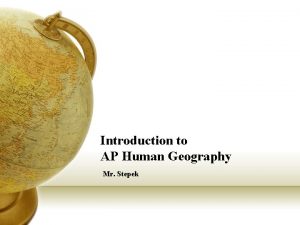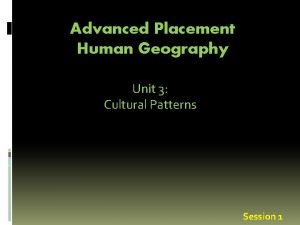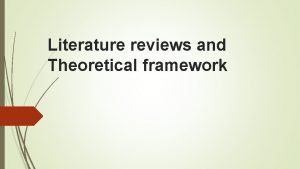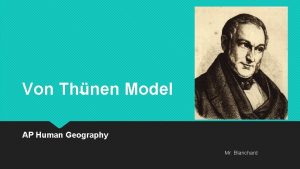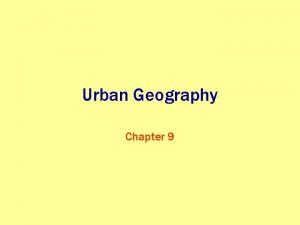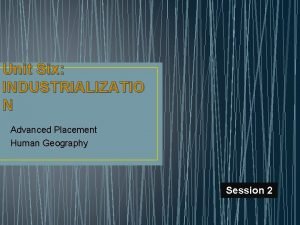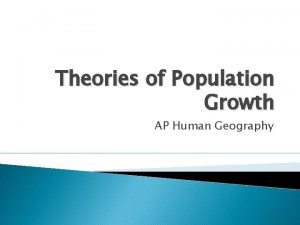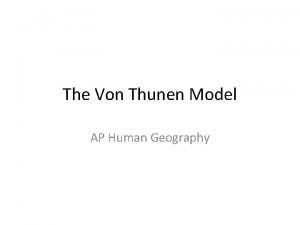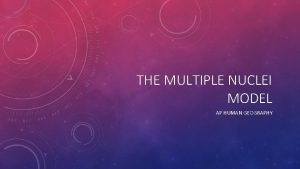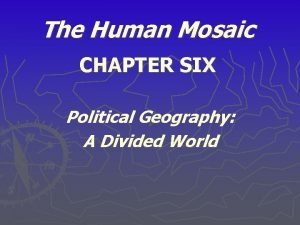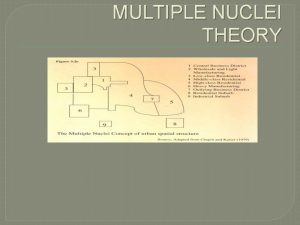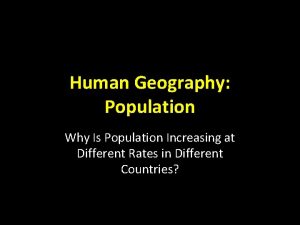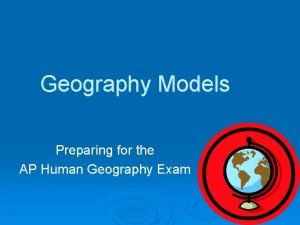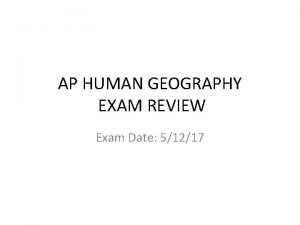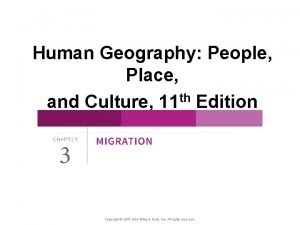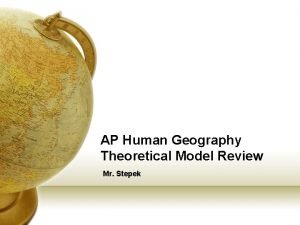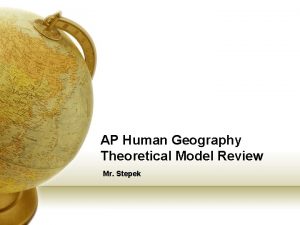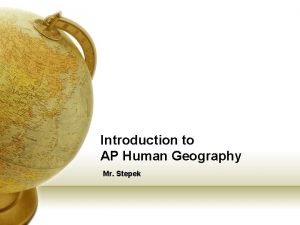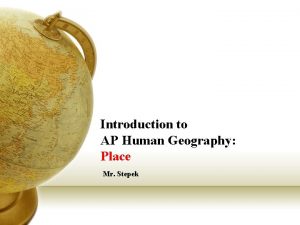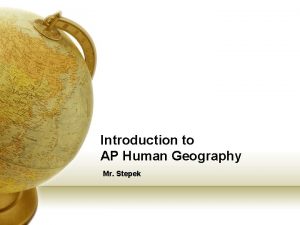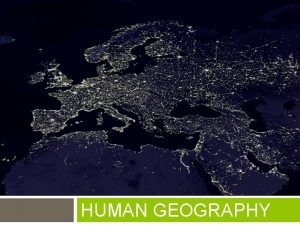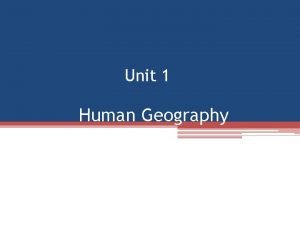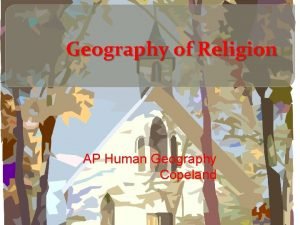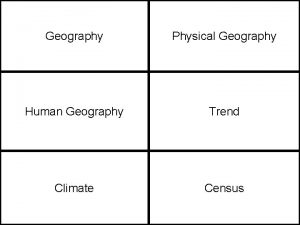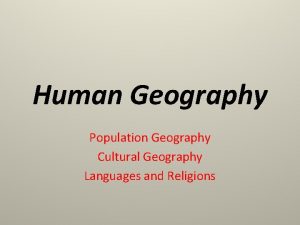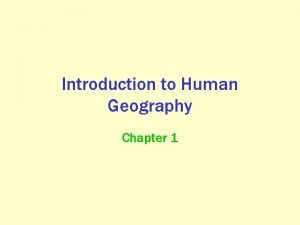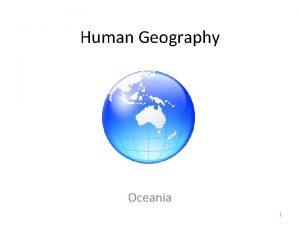AP Human Geography Theoretical Model Review Mr Stepek

























- Slides: 25

AP Human Geography Theoretical Model Review Mr. Stepek

Unit 7: Services and Urban Patterns

Central Place Theory (Christaller) • Cities, towns, villages and hamlets are nested in an urban hierarchy reflecting that the largest central place provides the greatest number of functions. Distribution of cities is tied to trade areas, population size and distance. • • • Hinterland Threshold Range Hexagon Rank-size rule Primate city rule (breaks theory)




Borchert’s Epochs • refer to 5 distinct periods in American urbanization. • Sail-Wagon Epoch (1790– 1830); waterways, canals, gateway cities • Steamboat-Iron Horse Epoch (1830– 70), characterized by impact of steam engine technology, and development of steamboats and regional railroad networks; • Steel Rail Epoch (1870– 1920), dominated by the development of long haul railroads and a national railroad network; • Auto-Air-Amenity Epoch (1920– 70), with growth in the gasoline combustion engine; • Satellite-Electronic-Jet Propulsion (1970–? ), also called the High-Technology Epoch.


North American Urban Models Burgess Concentric Zone • As cities grow, circular zones defined by their function surround the CBD. • Bid-rent theory • Affects land use, density, housing and social class Hoyt Sector Zone Model • Urban zones stretch form the CBD in wedges with similar functions extending out to the city’s outer edge. • transportation • amenities

North American Urban Models P. O. Muller Urban Realms Models Harris & Ullman Multiple Nuclei Model • CBD loses dominance • as several functional nodes develop (airport = transportation, university = education, etc. ) related to peripheral/galactic model • Edge cities/boomburbs on ring highway • Greenfields = planned • Uptowns = replace older areas • Multi-centered metropolis consisting of independent realms

World City Network (Lang & Taylor) • Cities provide different services and functions in a global or regional economy

Classical Models of Urban Structure


Peripheral/Galactic Model

LDC Urban Models Mc. Ghee Southeast Asian City Model • Similar land use patterns among medium-size cities • Proof of world systems model with port as focus of an raw material export-based economy • Alien sector = proof of Chinese migration

LDC Urban Models Griffin/Ford Latin American City Model • Unique urban development. CBD stretches along blvd from central plaza, elite live along spine, squatter settlements on outskirts. • Elements of sector model in spine

African City Model • Reflect colonial legacy • three CBDs • ethnic neighborhoods • fast growing • Shantytowns • megacities

Services and Urban Patterns FRQ Sample #1

Services and Urban Patterns FRQ Sample #1 Rubric

Services and Urban Patterns FRQ Sample #1 Rubric





 Graduated symbol map definition ap human geography
Graduated symbol map definition ap human geography Formal region example
Formal region example Renfrew hypothesis ap human geography
Renfrew hypothesis ap human geography Flows definition ap human geography unit 1
Flows definition ap human geography unit 1 Stepek ap human geo
Stepek ap human geo Frq format ap human geography
Frq format ap human geography 5 themes of geography ap human geography
5 themes of geography ap human geography Ap human geography political geography test
Ap human geography political geography test Cultural landscape ap human geography example
Cultural landscape ap human geography example Human development index definition ap human geography
Human development index definition ap human geography Theoretical framework vs literature review
Theoretical framework vs literature review Von thünen model definition ap human geography
Von thünen model definition ap human geography Edge city ap human geography
Edge city ap human geography Modernization model ap human geography
Modernization model ap human geography Population distribution
Population distribution Bid rent theory
Bid rent theory Multiple nuclei model
Multiple nuclei model Cleavage model ap human geography
Cleavage model ap human geography Multiple nuclei model examples
Multiple nuclei model examples Chain migration ap human geography
Chain migration ap human geography Demographic transition model ap human geography
Demographic transition model ap human geography Weber's least cost theory ap human geography
Weber's least cost theory ap human geography Concentric zone
Concentric zone Demographic transition model ap human geography definition
Demographic transition model ap human geography definition The arrangement of a phenomenon across earth's surface is
The arrangement of a phenomenon across earth's surface is Gravity model ap human geography
Gravity model ap human geography
